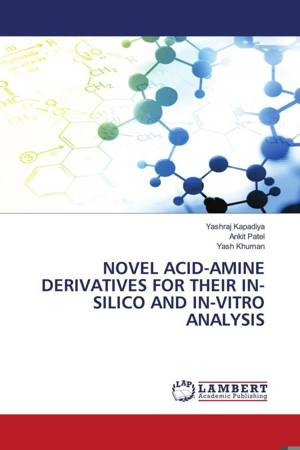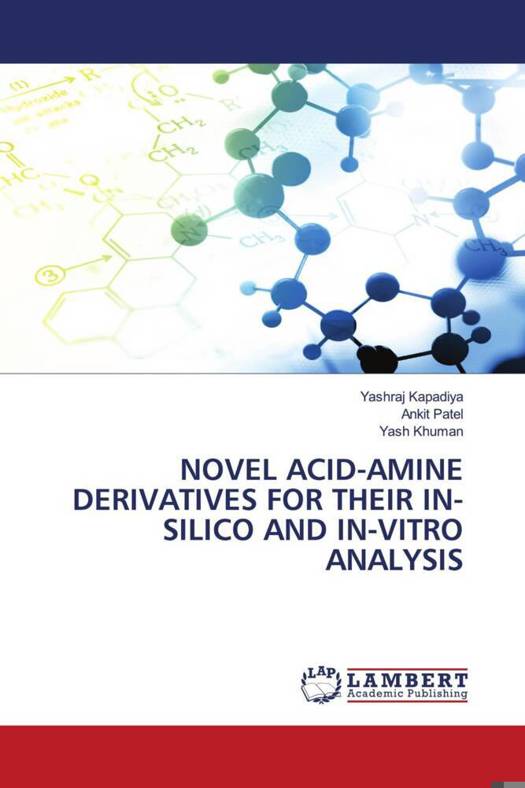
- Afhalen na 1 uur in een winkel met voorraad
- Gratis thuislevering in België vanaf € 30
- Ruim aanbod met 7 miljoen producten
- Afhalen na 1 uur in een winkel met voorraad
- Gratis thuislevering in België vanaf € 30
- Ruim aanbod met 7 miljoen producten
NOVEL ACID-AMINE DERIVATIVES FOR THEIR IN-SILICO AND IN-VITRO ANALYSIS
Yashraj Kapadiya, Ankit Patel, Yash Khuman
Paperback | Engels
€ 67,95
+ 135 punten
Omschrijving
This book explores the design, synthesis, spectroscopic characterisation, computational insights, and antimicrobial evaluation of novel acid-amine derivatives. It highlights the importance of amide-containing drugs, their synthesis through acid-amine coupling reactions, and the vital role of computational tools in modern drug discovery. The study utilised high-purity chemicals and advanced software to ensure reliable outcomes. Novel derivatives were successfully synthesised by coupling -COOH and -NH2 groups with reagents such as HATU, HBTU, SOCl2, and POCl , and characterised using ¹H NMR, ¹³C NMR, UV, and mass spectrometry. Computational analysis provided insights into optimised geometries, Mulliken charge distribution, molecular electrostatic potential maps, and HOMO-LUMO energy gaps via DFT. Protein-ligand interaction studies using Schrödinger software revealed significant hydrogen bonding and hydrophobic contacts. Biological evaluation further demonstrated the antimicrobial potential of these derivatives, with certain compounds showing strong activity against both Gram-positive and Gram-negative bacterial strains, identifying them as promising leads for drug development.
Specificaties
Betrokkenen
- Auteur(s):
- Uitgeverij:
Inhoud
- Aantal bladzijden:
- 136
- Taal:
- Engels
Eigenschappen
- Productcode (EAN):
- 9786208491529
- Uitvoering:
- Paperback
- Afmetingen:
- 150 mm x 220 mm

Alleen bij Standaard Boekhandel
+ 135 punten op je klantenkaart van Standaard Boekhandel
Beoordelingen
We publiceren alleen reviews die voldoen aan de voorwaarden voor reviews. Bekijk onze voorwaarden voor reviews.










